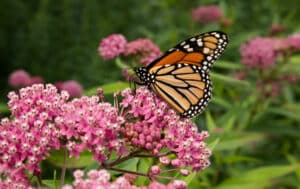
Rose Milkweed: Essential Native Plant for Monarch Butterflies
Rose milkweed is a beautiful native plant that can add color and life to your garden. This perennial flower, also known as Asclepias incarnata, grows
Shipping is temporarily suspended until Monday, July 7th to protect plant health. Click here to learn more.
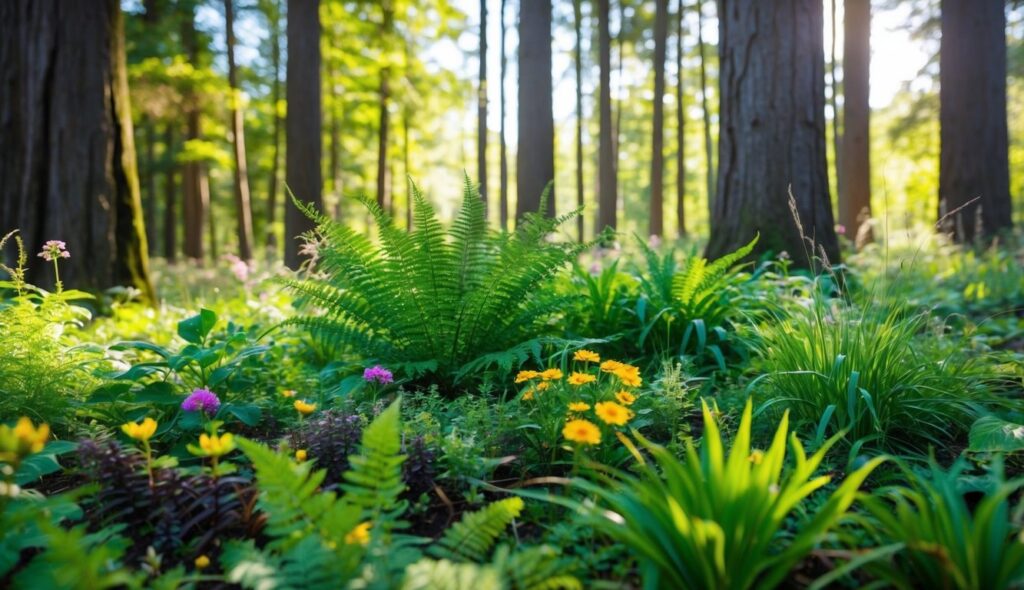
Native plants are species that grow naturally in a specific area without human help. They’ve adapted to local conditions over thousands of years.
These plants thrive in their native habitats and need little maintenance once established.
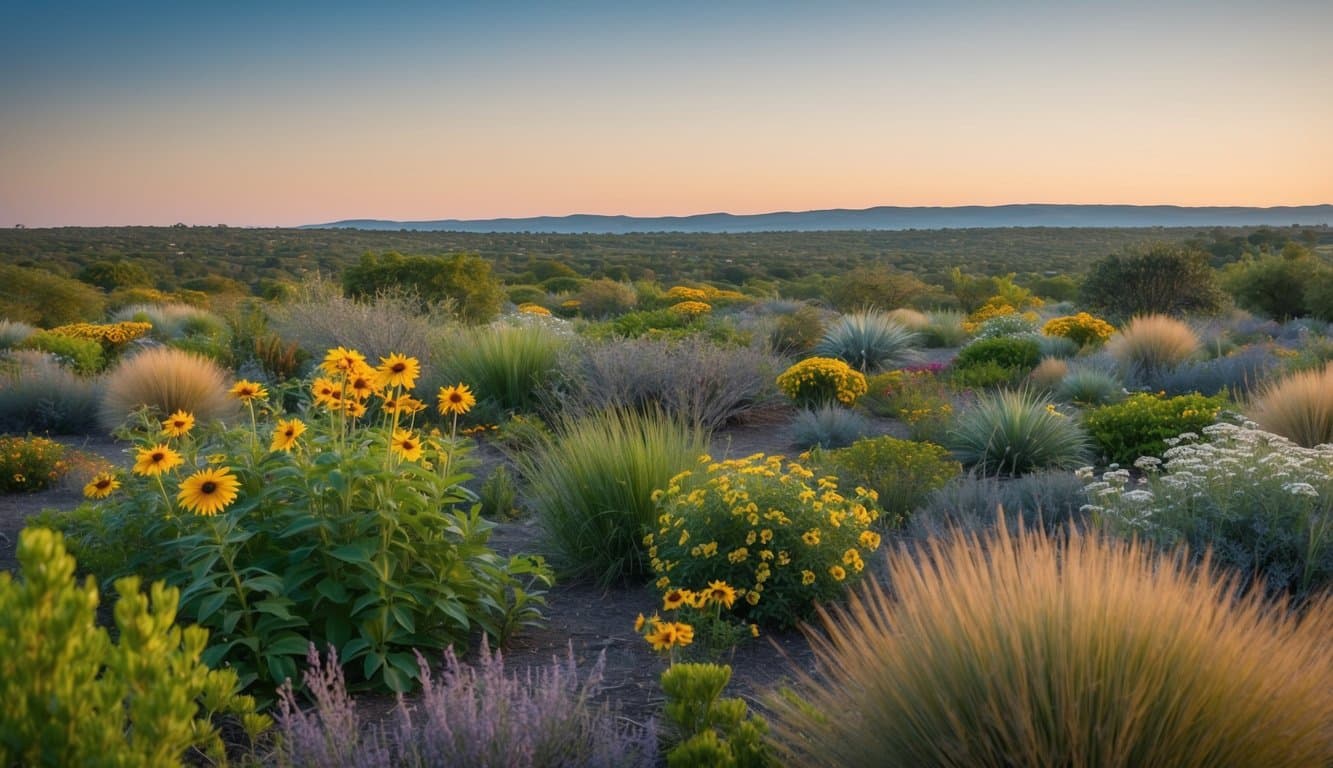
Native plants come in many forms. You might find colorful wildflowers, tall trees, dense shrubs, or swaying grasses.
Each plays a key role in its ecosystem. They provide food and shelter for local wildlife.
Using native plants in your yard can save you time and money.
They often need less water and fertilizer than non-native species.
Native plants can also make your landscape more resistant to pests and diseases.
By choosing native plants, you support local ecosystems and create a unique sense of place in your garden.
Native plants play a crucial role in supporting local ecosystems and wildlife. They offer many benefits that non-native species simply can’t match.
Native plants are key to maintaining biodiversity in your area.
They’ve evolved alongside local organisms over thousands of years.
This means they’re perfectly suited to your region’s climate and soil.
Native plants help keep the ecosystem in balance.
They don’t need extra water or fertilizer to thrive. This makes them eco-friendly choices for your garden.
These plants also help prevent soil erosion.
Their deep root systems hold soil in place during heavy rains or floods. This protects water quality in nearby streams and rivers.
Native plants provide essential food and shelter for local wildlife.
Birds, insects, and other animals rely on these plants for survival.
Many native flowering plants produce nectar that feeds butterflies and bees.
Their seeds and berries are important food sources for birds and small mammals.
Native trees and shrubs offer nesting sites and protection from predators. They give animals safe places to raise their young.
By planting natives, you create a mini wildlife habitat in your yard. This helps connect fragmented ecosystems in urban and suburban areas.
Native plants also support specialist pollinators.
These are insects that can only feed on specific plant species. Without these plants, these important pollinators would disappear.
Native plants are species that grow naturally in a specific area without human intervention. They have adapted to local conditions over thousands of years.
Native plants thrive in their local environment.
They need less water, fertilizer, and care than non-native species.
These plants have also developed defenses against local pests and diseases.
Native plants provide food and shelter for local wildlife.
They support pollinators like bees and butterflies.
Their deep root systems help prevent soil erosion and filter water.
You can identify native plants by their growth patterns and appearance.
They often have leaves, flowers, or fruits that match the local climate and soil type.
Invasive plants are non-native species that spread quickly and harm local ecosystems. Unlike native plants, they lack natural predators or controls in their new environment.
You can spot invasive plants by their rapid growth and tendency to crowd out other species.
They often have shallow root systems and produce many seeds.
Native plants support biodiversity, while invasive plants reduce it.
Removing invasive species and planting natives can help restore balance to your local ecosystem.
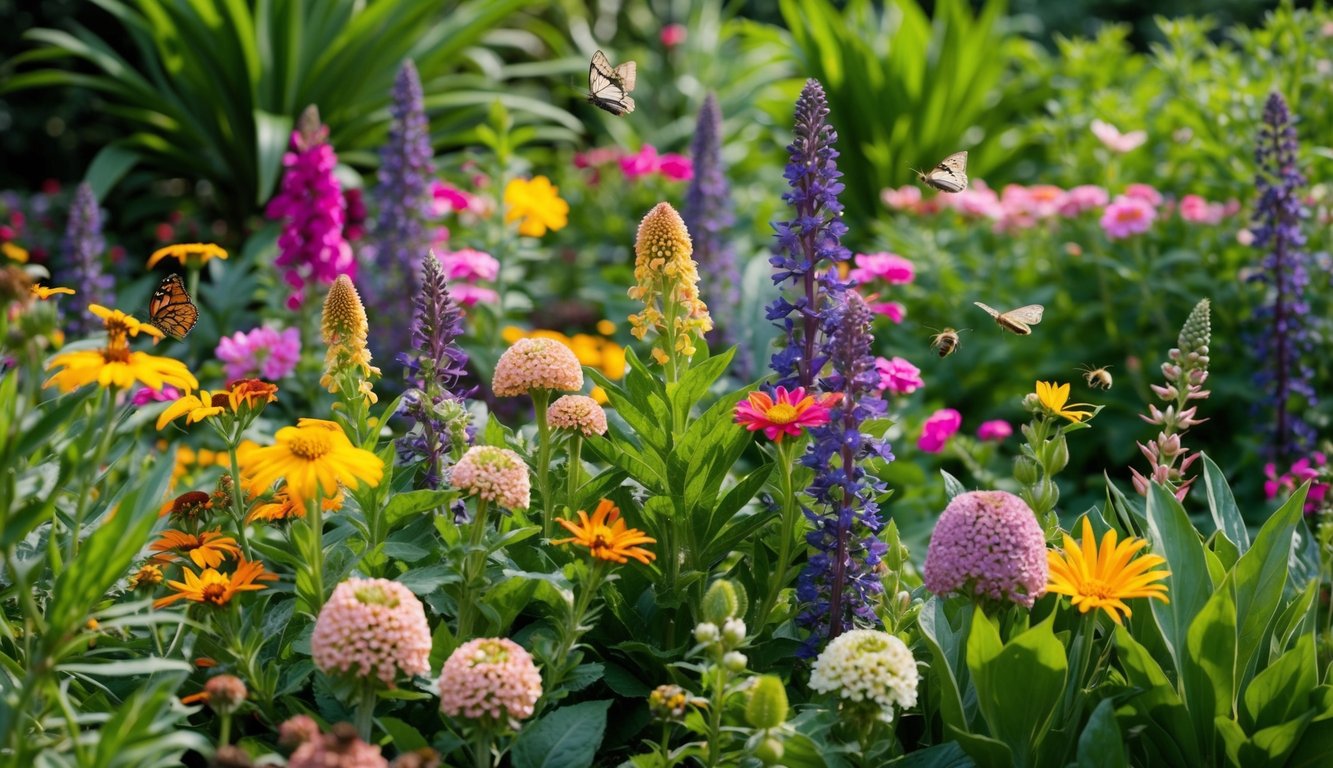
Native plants are great choices for gardens. They’re adapted to local conditions and support wildlife. Let’s explore how to use them in your garden.
Start by looking at your yard. Note sunny and shady spots.
Check your soil type. Is it sandy, clay, or loamy? These facts help you pick the right plants.
Make a list of native plants you like.
Think about their sizes and colors. Mix tall and short plants for visual interest. Group plants with similar needs together.
Consider your goals.
Do you want to attract butterflies? Create a low-water garden? Native plants can help with both.
Research plants native to your region. Your local extension office can help. They often have lists of native plants for your area.
Pick plants that match your yard’s conditions.
Some like full sun, others prefer shade. Make sure they can handle your soil type.
Think about bloom times.
Choose plants that flower at different times. This gives you color all season long.
Native plants come in many forms. Try trees, shrubs, flowers, and grasses. This variety creates a natural look in your garden.
Native plants are often low-maintenance.
They need less water once established. This saves you time and money on your water bill.
Avoid chemical fertilizers and pesticides.
These can harm helpful insects. Instead, use compost to feed your plants.
Water new plants regularly until their roots grow deep.
After that, they often need less water than non-native plants.
Prune native shrubs and trees as needed. This keeps them healthy and shaped well. Remove dead flowers to encourage more blooms.
Leave some leaves and dead plant material in your garden. These provide homes for insects and birds.

Native plants play a key role in supporting local wildlife. They provide food and shelter for many animals, especially insects and birds.
Native plants are vital for pollinators like bees and butterflies.
These plants offer nectar and pollen that insects need to survive.
Many butterflies lay eggs only on specific native plants. These “host plants” feed caterpillars as they grow.
You’ll see more bees in your yard if you plant native flowers.
Bees collect pollen to feed their young.
Native plants produce pollen that local bees can easily digest. Some non-native plants may not provide the right type of food for native bees.
Hummingbirds also rely on native plants for nectar.
They prefer flowers with long, tube-shaped blooms. By planting these, you can attract more hummingbirds to your garden.
Native plants help create homes for animals.
Birds use native trees and shrubs to build nests. These plants offer safe places to hide from predators.
You can turn your yard into a wildlife haven with native plants.
Dense shrubs give shelter to small animals. Tall grasses provide cover for ground-nesting birds. Native trees offer perches and nesting spots for many bird species.
Some native plants produce berries or seeds that birds eat. Others attract insects that become food for birds and other wildlife.
By planting a mix of native species, you can provide food for animals year-round.
Native plants also need less water and care than non-native ones.
This means you’ll have a low-maintenance habitat that helps local wildlife thrive.
Native plants offer many benefits for creating sustainable landscapes. They help conserve water, improve soil health, and support local ecosystems.
Native plants have deep root systems that help prevent soil erosion.
These roots hold soil in place during heavy rains and wind. They also absorb more water than shallow-rooted plants, reducing runoff and flooding risks.
You can use native plants to create natural buffers near water sources.
These buffers filter pollutants and slow water flow, protecting streams and lakes.
Native plants also need less water once established, helping you conserve this precious resource.
By choosing native species, you’ll improve your soil over time.
Their roots add organic matter as they grow and die back each year. This builds healthier soil that retains more water and nutrients.
When planning your landscape, group plants with similar water needs together. This practice, called hydrozoning, helps you water more efficiently.
You can focus on giving each area just the right amount of water it needs.
Consider replacing some of your lawn with native plant beds. Lawns often require more water and care than native landscapes.
By reducing lawn size, you’ll cut down on mowing, fertilizing, and watering.
Use mulch around your native plants to retain moisture and suppress weeds. This reduces the need for watering and herbicides.
Choose organic mulches that break down over time, adding nutrients to the soil.
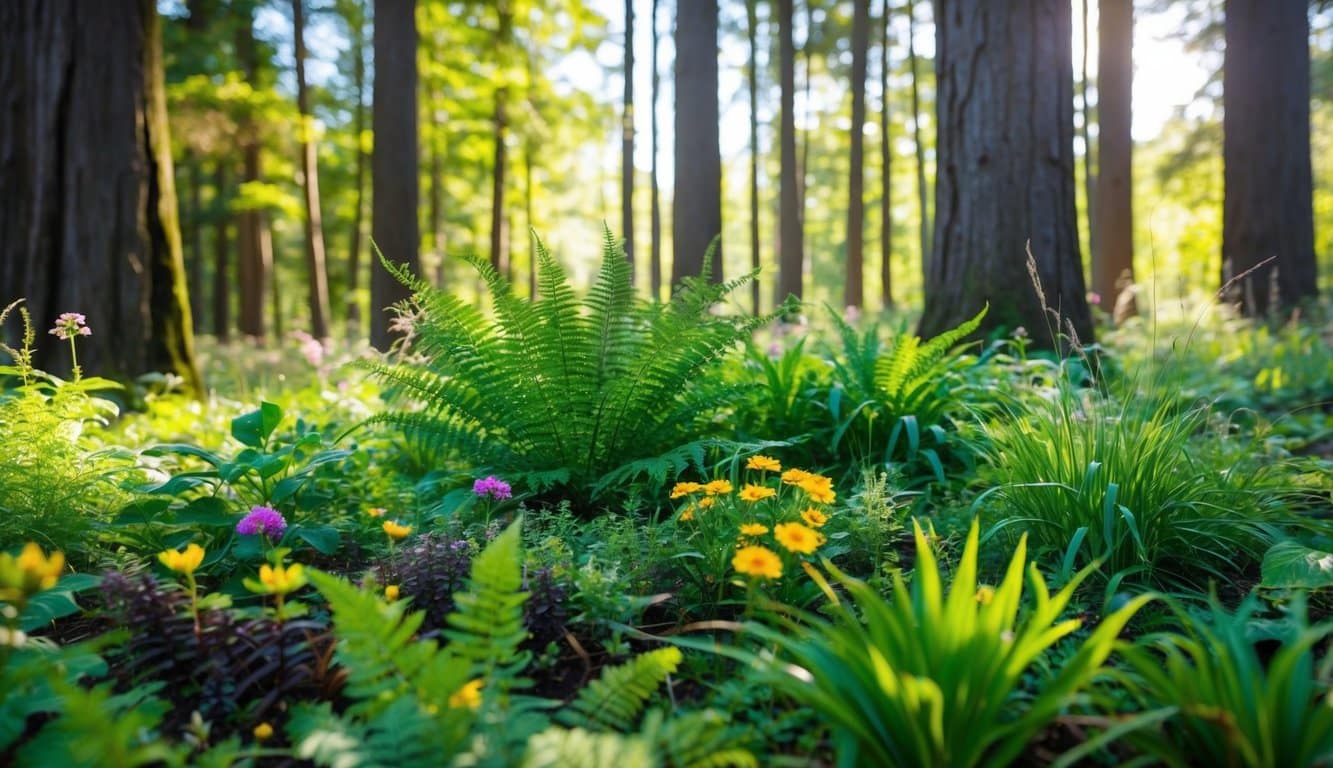
Native plants come in many forms suited to different ecosystems. They play key roles in local habitats and landscapes.
Native shrubs and trees form the backbone of many ecosystems. Shrubs like blueberry and elderberry provide food for wildlife. They also offer shelter for small animals.
Native trees like oak and maple create the forest canopy. Their leaves, bark, and roots support countless species.
You’ll find native shrubs and trees in various sizes. Some grow as short bushes, while others tower over 100 feet tall.
Many have beautiful flowers or colorful fall foliage. Native woody plants often need less care than non-native ornamentals.
Native grasses and sedges are vital to prairies, meadows, and wetlands.
Grasses like big bluestem and switchgrass have deep roots that prevent soil erosion. Sedges thrive in wet areas and help filter water.
These plants provide food and habitat for insects, birds, and small mammals.
Many native grasses are drought-tolerant and low-maintenance. You can use them in lawns or gardens for a natural look.
Native vines and ferns add diversity to forests and gardens. Vines like Virginia creeper climb trees and walls.
They offer food for birds and create shelter for small creatures. Ferns thrive in shady, moist areas. They help prevent soil erosion on forest floors.
You can grow native vines on trellises or fences for green screens. Ferns make excellent ground covers in shady spots.
Both types of plants are often easy to care for once established.

Native plants thrive in their local environments. They have adapted to the specific weather patterns, soil types, and other conditions in their native regions.
Hardiness zones help you pick plants that can survive in your area. These zones are based on the average lowest winter temperatures.
The U.S. Department of Agriculture (USDA) divides North America into 13 zones.
Each zone differs by 10°F. Zone 1 is the coldest, while zone 13 is the warmest.
You can find your zone on the USDA’s hardiness zone map.
When you choose native plants for your garden, look at their hardiness zone ratings.
Pick plants that match or can tolerate your zone. This way, you’ll know they can handle your local winters.
Native plants in your zone will be better equipped to deal with:
These plants have natural defenses against harsh weather. They might go dormant or have special adaptations to protect themselves.
Native plants bring many benefits to local ecosystems and landscapes. Let’s explore some common questions about these important species.
Native plants support local wildlife. They provide food and shelter for birds, insects, and other animals. These plants also help prevent soil erosion. Their deep roots hold soil in place during heavy rains or floods.
You can use field guides or plant identification apps. Local nurseries and botanical gardens are great resources.
They often have experts who can help you spot native species. You can also join native plant societies in your area to learn more.
Native plants evolved in a specific region over thousands of years. They’re adapted to local soil, climate, and wildlife.
Non-native plants come from other areas and may not thrive without extra care. Native plants often need less water and fertilizer than non-natives.
Native plants can save you time and money. They need less water and fertilizer than many non-natives.
These plants are often more resistant to local pests and diseases. This means you’ll spend less time on maintenance. Native plants can also attract beautiful birds and butterflies to your yard.
Native plants support a wide range of local species. They provide food and homes for native insects, birds, and animals.
This creates a healthy, diverse ecosystem in your area. More plant diversity leads to more animal diversity.
Yes, native and non-native plants can grow together. But it’s important to choose non-invasive species.
Some introduced plants can take over and harm native ecosystems. You can create a mixed garden with both types of plants. Just make sure to give native species plenty of space to thrive.

Rose milkweed is a beautiful native plant that can add color and life to your garden. This perennial flower, also known as Asclepias incarnata, grows

Nodding onion plant is a charming native plant found across North America. Its drooping pink or white flower clusters add a whimsical touch to gardens
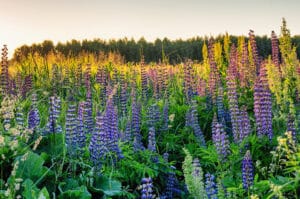
Lupinus perennis, known as wild lupine, is a stunning native wildflower of eastern North America. This perennial plant adds a splash of color to meadows
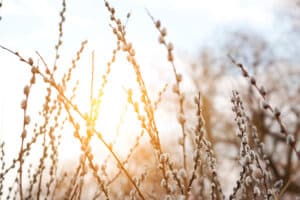
Pussy willows are a beloved sign of spring’s arrival. These fuzzy catkins appear on willow shrubs before their leaves emerge. Their soft, silvery buds resemble
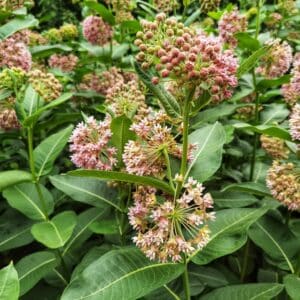

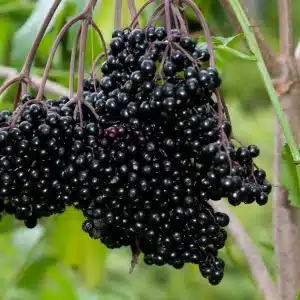
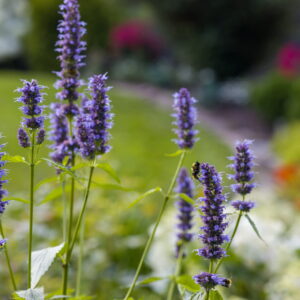
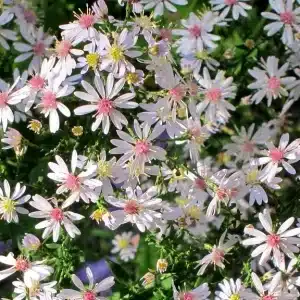
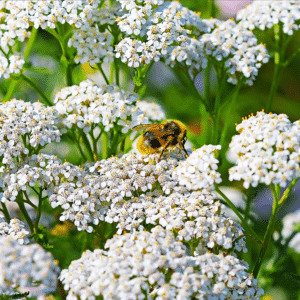
BUYING HIGH QUALITY PLANTS HAS NEVER BEEN EASIER
Our plants are easy to order, plant, and enjoy! Bringing pollinators to your property improves vegetable yields – Feed the bees!
Sign up for our email list!
Copyright © 2025 Bumbee’s | Web design and SEO by Searles Graphics